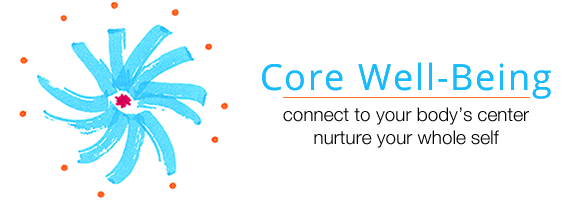MELT is self-care by design. You’re the one helping yourself to health.
I strongly encourage you to read Sue Hitzmann’s inspiring and informative book, The MELT Method — available on Amazon and MeltMethod.com — and watch these videos.
With this foundation, you’ll appreciate what makes MELT so effective. You’ll understand why practicing MELT according to its principles is so important to receiving the benefits you’re seeking.
MELT principles
No pain, no pain
In MELT’s perspective, pain is a sign you’ve got an issue with your connective tissue.
Connective tissue is your body’s three-dimensional scaffolding, a continuous web of structure and support from bone to skin, from head to toe.
In essence, connective tissue is a network of fibers embedded in a fluid matrix. It wraps your bones, muscles, organs, nerves, and blood vessels. It anchors most of your body’s sensory nerve endings. In fact, nerves and connective tissue are so intimately related we can speak of them as a single neurofascial system.
Because your nerves and connective tissue exist in such immediate contact, when your nerves send you pain signals they’re telling you there’s an issue with your connective tissue.
The issue is dehydration. When connective tissue — this mélange of fiber and fluid — dries out, it becomes sticky and stringy. Sticky and stringy connective tissue compresses the nerves it’s anchoring and you feel pain. If the cause of pain is nerve compression, there’s no reason to aggravate the nerves with more compression.
MELT conditions dehydrated connective tissue to absorb fluid and promote fluid flow throughout your neurofascial system. When you MELT, you resolve pain by rehydrating your connective tissue and releasing your nerves from unnecessary stimulation.
MELT’s techniques apply a specially designed soft roller and set of balls to specific areas of the body. If you feel pain while practicing a technique at a certain site, you apply less pressure there. Or none at all: you go to another area entirely — you go indirect before direct.
Indirect before direct
If you feel pain at a certain site, you start by MELTing another area entirely. Because connective tissue is one interconnected web, hydrating a pain-free area and amplifying the flow of fluid from there will rehydrate the painful place as well.
For example, if you have foot pain, your first step is a Soft Ball Hand Treatment. If you have neck pain, you start with the Lower Body Compression and Lower Body Length Sequences. Assessing before and after each sequence and self-treatment, you’ll note how pain diminishes when you MELT at a distance from what initially was a painful place.
Less is more
Your body’s connective tissue is, in general, more delicate than muscle. Massage techniques knead and stretch muscle, often with a great degree of pressure, over an expansive area, for an extended period of time.
In contrast, MELT applies gentle, tolerable pressure to a limited, targeted area for the duration of one, two, or three focused breaths. MELT techniques apply just enough compression and lengthening to increase connective tissue’s fluid absorption and promote the flow of fluid body-wide.
Get in, get out
As above.
Take focused breaths
When you apply a MELT technique to an area of your body, see or feel or simply imagine that you’re sending your breath to and through that site. Your focused breathing engages your mind and helps your neurofascial system make the long-lasting, health-enhancing changes you desire.
Find your core
MELT’s Rebalance techniques activate your neurofascial system’s capacity to ground and center you, mobilizing the core reflexes that protect, support, and stabilize your body. Engaging your core as you practice makes all the MELT techniques all the more effective.
Drink water, lots of water
MELT’s benefits follow from rehydrating connective tissue, which requires an ample supply of water. To get the results you want, drink water:
8 oz before and after you MELT. At least 0.6 x your body weight daily, in ounces, in small sips every 15 minutes through the day.
For example, if you weigh 150 lbs — 0.6 x 150 = 90 oz ≈ 0.75 gallon
Which means: drink at least three-quarters of a gallon per day.
